Having a rug under your kitchen table can add a touch of style and comfort to your dining area. However, it also has its drawbacks. Let's take a look at the pros and cons of having a rug under your kitchen table. Pros: If you have hardwood or tile flooring in your kitchen, a rug can provide a soft and comfortable surface for your feet. This can be especially beneficial if you spend a lot of time standing in the kitchen while cooking or doing dishes. Rugs can also help define a dining area in an open concept space, making it feel more cozy and inviting. It can also add a pop of color and texture to an otherwise neutral room. Another benefit of having a rug under your kitchen table is that it can help reduce noise. The rug will absorb sound and prevent it from bouncing off hard surfaces, making your dining area a quieter and more peaceful space. A rug can also protect your flooring from spills and scratches. This is especially useful if you have young children who may accidentally spill food or drinks while sitting at the table. Lastly, a rug can be easily replaced or changed, allowing you to update the look and feel of your dining area without having to renovate or purchase new furniture. Cons: One of the main drawbacks of having a rug under your kitchen table is the potential for stains and messes. Spilled food and drinks can easily soak into the rug and be difficult to clean, especially if you have a light-colored rug. Rugs can also be a tripping hazard, especially if they are not properly secured to the floor. This can be a concern for young children or elderly individuals. Cleaning and maintaining a rug under your kitchen table can also be time-consuming and require regular vacuuming, spot cleaning, and professional cleaning services. Another consideration is the size and placement of the rug. If the rug is too small, it may look out of proportion to the table and chairs, and if it is too big, it may make the space feel cramped and crowded. Lastly, a rug can be an additional expense and may not be a practical choice for those on a tight budget.Pros and Cons of Having a Rug Under Your Kitchen Table
Choosing the right rug size for your kitchen table is essential for creating a cohesive and balanced look in your dining area. Here are some tips for finding the perfect rug size for your kitchen table. Measure Your Table: The first step is to measure your kitchen table. You want to make sure that the rug is large enough to fit comfortably under the table and extend beyond the edges of the table and chairs. As a general rule, the rug should extend at least 18 inches beyond the edges of the table to allow enough space for the chairs to be pulled out without falling off the rug. Consider the Shape of Your Table: The shape of your table can also play a role in determining the best rug size. For a round table, choose a round rug that is slightly larger than the diameter of the table. For a rectangular table, a rectangular rug that is slightly wider and longer than the table will work best. Choose the Right Material: The material of the rug is also important to consider. If you have young children or pets, a durable and stain-resistant material such as wool or polypropylene may be a better choice. If you want a softer and more luxurious feel, opt for a natural material like silk or cotton. Consider the Room Layout: Take into account the overall layout of your space when choosing a rug size. If your dining area is in a larger room, a bigger rug may be needed to anchor the space and make it feel cohesive. Alternatively, a smaller rug may work better in a smaller or more compact room to prevent it from feeling too crowded.How to Choose the Right Rug Size for Your Kitchen Table
If you're still on the fence about whether or not to have a rug under your kitchen table, here are five reasons why you should consider adding one to your dining area. 1. Adds Comfort: As mentioned earlier, a rug can provide a soft and comfortable surface for your feet while standing in the kitchen. This can make a big difference if you spend a lot of time in the kitchen cooking or doing dishes. 2. Defines the Space: A rug can help define a dining area in an open concept space, making it feel like a separate and distinct area. This can be especially useful in smaller homes or apartments where there may not be a designated dining room. 3. Enhances the Aesthetic: A rug can add texture, color, and pattern to your dining area, making it more visually appealing. It can also tie in with other decor elements in the room, creating a cohesive and stylish look. 4. Reduces Noise: If you have hard flooring in your kitchen, a rug can help absorb sound and reduce noise levels. This can be beneficial if you have a busy household or enjoy hosting dinner parties or gatherings in your home. 5. Protects Your Flooring: As mentioned earlier, a rug can protect your flooring from spills, scratches, and other damage. This can be especially useful if you have expensive or delicate flooring that you want to preserve.5 Reasons Why You Should Have a Rug Under Your Kitchen Table
Now that you know the benefits of having a rug under your kitchen table, it's important to know the dos and don'ts of proper placement. Here are some tips to keep in mind. Do: - Choose a rug that is the right size for your table and space. Remember to leave enough room for chairs to be pulled out without falling off the rug. - Secure the rug to the floor to prevent tripping hazards. - Consider a rug pad to prevent slipping and add extra cushioning. - Vacuum regularly and spot clean as needed to keep your rug looking clean and fresh. Don't: - Choose a rug that is too small or too large for your space. - Place a rug in a high traffic area, as it may get worn down quickly. - Choose a light-colored or delicate rug if you have young children or pets. - Neglect proper maintenance and cleaning of your rug.The Dos and Don'ts of Placing a Rug Under Your Kitchen Table
Keeping your rug clean under your kitchen table is essential for maintaining its appearance and prolonging its lifespan. Here are some tips for keeping your rug looking fresh and clean. Vacuum Regularly: Regular vacuuming is the best way to keep your rug free of dirt, dust, and debris. Aim to vacuum at least once a week, or more frequently if needed, especially if you have pets or children. Spot Clean Stains: If you do have a spill or stain on your rug, it's important to act quickly and spot clean it before it sets in. Use a clean cloth and a mild cleaning solution to gently blot the stain. Avoid rubbing or scrubbing, as this can push the stain deeper into the fibers. Rotate the Rug: To prevent uneven wear and tear, rotate your rug every few months. This will help distribute foot traffic and prevent certain areas of the rug from becoming more worn down than others. Professional Cleaning: It's also a good idea to have your rug professionally cleaned at least once a year, especially if it's in a high traffic area or has deep stains that you can't remove on your own.How to Keep Your Rug Clean Under Your Kitchen Table
While having a rug under your kitchen table has its benefits, some people may choose not to have one for various reasons. Here are some common reasons why people may choose not to have a rug under their kitchen table. Prefer a Minimalist Look: Some people may prefer a more minimalist and streamlined look in their dining area and may feel that a rug would add unnecessary clutter. Easy to Clean: Without a rug, it may be easier to clean up spills and messes on the floor and avoid potential staining or damage to the rug. Saves Money: As mentioned earlier, a rug can be an additional expense, and some people may choose to save money by not having one under their kitchen table. Not Practical for their Lifestyle: For some individuals, a rug under their kitchen table may not be practical for their lifestyle. For example, those who have pets that shed a lot or young children who may make a mess at the dining table may find it easier to have a bare floor that is easier to clean.Why Some People Choose Not to Have a Rug Under Their Kitchen Table
If you have decided to add a rug under your kitchen table, it's important to choose the right type of rug for your space. Here are some popular options to consider. Wool: Wool rugs are durable, stain-resistant, and come in a variety of colors and patterns. They are also soft and comfortable underfoot, making them a great choice for under a kitchen table. Polypropylene: Polypropylene rugs are affordable, easy to clean, and come in a wide range of styles. They are also water-resistant, making them a good choice for kitchens where spills are more likely to occur. Cotton: Cotton rugs are soft, lightweight, and come in a variety of colors and patterns. They are also easy to clean and maintain, making them a popular choice for under a kitchen table. Sisal: Sisal rugs are made from natural fibers and are durable, eco-friendly, and add a touch of texture to a space. They are also easy to clean and maintain, but may not be as soft underfoot as other materials.The Best Types of Rugs for Under a Kitchen Table
Once you have chosen the perfect rug for your kitchen table, it's time to incorporate it into your decor. Here are some tips for seamlessly integrating a rug into your dining area. Choose a Color and Pattern: The color and pattern of your rug can help tie in with other elements in the room. Choose a color that complements your existing decor and a pattern that adds interest and texture to the space. Layer with Other Rugs: If you have a larger room, consider layering a smaller rug under your kitchen table with a larger rug in the surrounding area. This can help define the dining space while also adding visual interest. Coordinate with Curtains or Upholstery: If you have curtains or upholstered chairs in your dining area, choose a rug that complements these elements to create a cohesive and coordinated look. Accessorize with Decor: Incorporate other decor elements, such as a centerpiece or table runner, that tie in with the colors and patterns of your rug to create a cohesive and stylish look.How to Incorporate a Rug Under Your Kitchen Table into Your Decor
Choosing the right color and pattern for a rug under your kitchen table can be overwhelming with so many options available. Here are some tips to help you narrow down your choices. Consider Your Existing Decor: Take into account the colors and patterns already present in your kitchen and dining area. Choose a rug that complements these elements rather than clashes with them. Think About the Mood: Do you want your dining area to feel cozy and inviting or bright and vibrant? The color and pattern of your rug can help set the mood and atmosphere of the space. Use Neutral Colors as a Base: If you're unsure about committing to a bold color or pattern, opt for a neutral-colored rug as a base and add pops of color and pattern through smaller decor items. Experiment with Patterns: Don't be afraid to mix and match patterns in your dining area. Just make sure to choose patterns that complement each other rather than compete with each other.Tips for Choosing the Right Color and Pattern for a Rug Under Your Kitchen Table
Properly measuring for a rug under your kitchen table is essential for finding the right size and ensuring a balanced and cohesive look. Here's how to measure for a rug under your kitchen table. Step 1: Measure Your Table: Measure the length and width of your kitchen table and add 18 inches to each measurement to determine the minimum size of the rug you will need. Step 2: Consider the Chairs:How to Measure for a Rug Under Your Kitchen Table
Rug Under Kitchen Table: A Design Dilemma
 When it comes to designing your kitchen, every detail matters. From the color of the walls to the type of flooring, each element contributes to the overall aesthetic of the space. One common design dilemma that many homeowners face is whether or not to place a rug under their kitchen table. While some may argue that a rug adds warmth and visual interest, others may argue that it is unnecessary and can be a hassle to clean. In this article, we will explore the pros and cons of having a rug under your kitchen table and ultimately help you make an informed decision for your own home.
When it comes to designing your kitchen, every detail matters. From the color of the walls to the type of flooring, each element contributes to the overall aesthetic of the space. One common design dilemma that many homeowners face is whether or not to place a rug under their kitchen table. While some may argue that a rug adds warmth and visual interest, others may argue that it is unnecessary and can be a hassle to clean. In this article, we will explore the pros and cons of having a rug under your kitchen table and ultimately help you make an informed decision for your own home.
The Pros of Having a Rug Under Your Kitchen Table
 One of the main benefits of having a rug under your kitchen table is that it can add a touch of coziness and warmth to the space. In a room where family and friends often gather, a rug can create a comfortable and inviting atmosphere. Additionally, a rug can also serve as a visual anchor, defining the dining area and making it feel more cohesive with the rest of the kitchen.
Another advantage of having a rug under your kitchen table is that it can help to protect your flooring. In high-traffic areas like the kitchen, the floor is prone to wear and tear. Placing a rug under your table can help to prevent scratches and stains, especially if you have young children or pets.
One of the main benefits of having a rug under your kitchen table is that it can add a touch of coziness and warmth to the space. In a room where family and friends often gather, a rug can create a comfortable and inviting atmosphere. Additionally, a rug can also serve as a visual anchor, defining the dining area and making it feel more cohesive with the rest of the kitchen.
Another advantage of having a rug under your kitchen table is that it can help to protect your flooring. In high-traffic areas like the kitchen, the floor is prone to wear and tear. Placing a rug under your table can help to prevent scratches and stains, especially if you have young children or pets.
The Cons of Having a Rug Under Your Kitchen Table
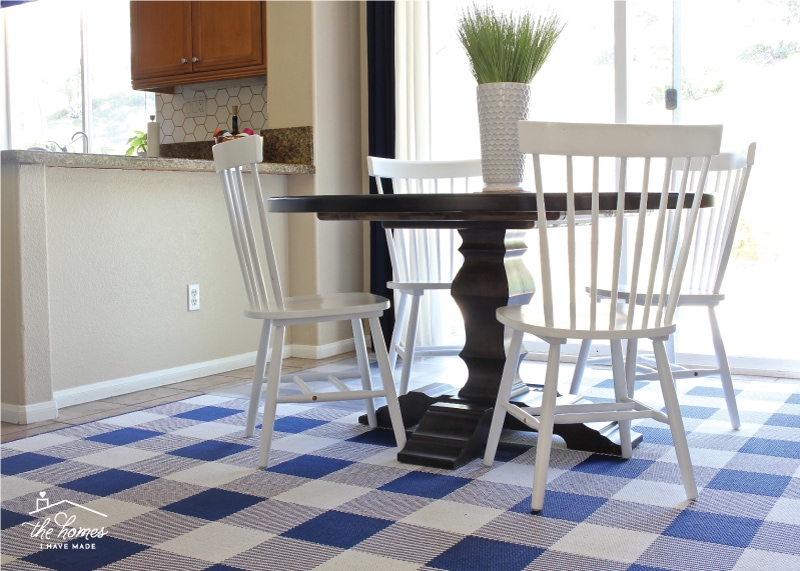 On the other hand, there are also some drawbacks to consider when it comes to having a rug under your kitchen table. Firstly, a rug may not be the most practical choice for a dining space. Spills and crumbs are inevitable when it comes to mealtime, and a rug can be more difficult to clean compared to a hard surface flooring. This can be especially concerning if you have a light-colored or delicate rug.
Additionally, a rug under a kitchen table can also pose a tripping hazard. If the rug is not properly secured, it can easily move or bunch up, causing someone to trip and potentially get injured. This is especially important to consider if you have young children or elderly individuals in your home.
On the other hand, there are also some drawbacks to consider when it comes to having a rug under your kitchen table. Firstly, a rug may not be the most practical choice for a dining space. Spills and crumbs are inevitable when it comes to mealtime, and a rug can be more difficult to clean compared to a hard surface flooring. This can be especially concerning if you have a light-colored or delicate rug.
Additionally, a rug under a kitchen table can also pose a tripping hazard. If the rug is not properly secured, it can easily move or bunch up, causing someone to trip and potentially get injured. This is especially important to consider if you have young children or elderly individuals in your home.
The Verdict
 Ultimately, the decision of whether or not to have a rug under your kitchen table depends on your personal preferences and lifestyle. If you value the added warmth and visual interest that a rug can bring, and are willing to put in the extra effort to clean and maintain it, then go for it! However, if you prioritize practicality and safety, then it may be best to stick with a hard surface flooring.
In the end, the most important thing is to choose a design that suits your needs and makes you happy. Whether you decide to have a rug under your kitchen table or not, remember to consider the overall aesthetic and functionality of the space. With the right choice, your kitchen will surely be a beautiful and functional space for you and your loved ones to enjoy.
Ultimately, the decision of whether or not to have a rug under your kitchen table depends on your personal preferences and lifestyle. If you value the added warmth and visual interest that a rug can bring, and are willing to put in the extra effort to clean and maintain it, then go for it! However, if you prioritize practicality and safety, then it may be best to stick with a hard surface flooring.
In the end, the most important thing is to choose a design that suits your needs and makes you happy. Whether you decide to have a rug under your kitchen table or not, remember to consider the overall aesthetic and functionality of the space. With the right choice, your kitchen will surely be a beautiful and functional space for you and your loved ones to enjoy.

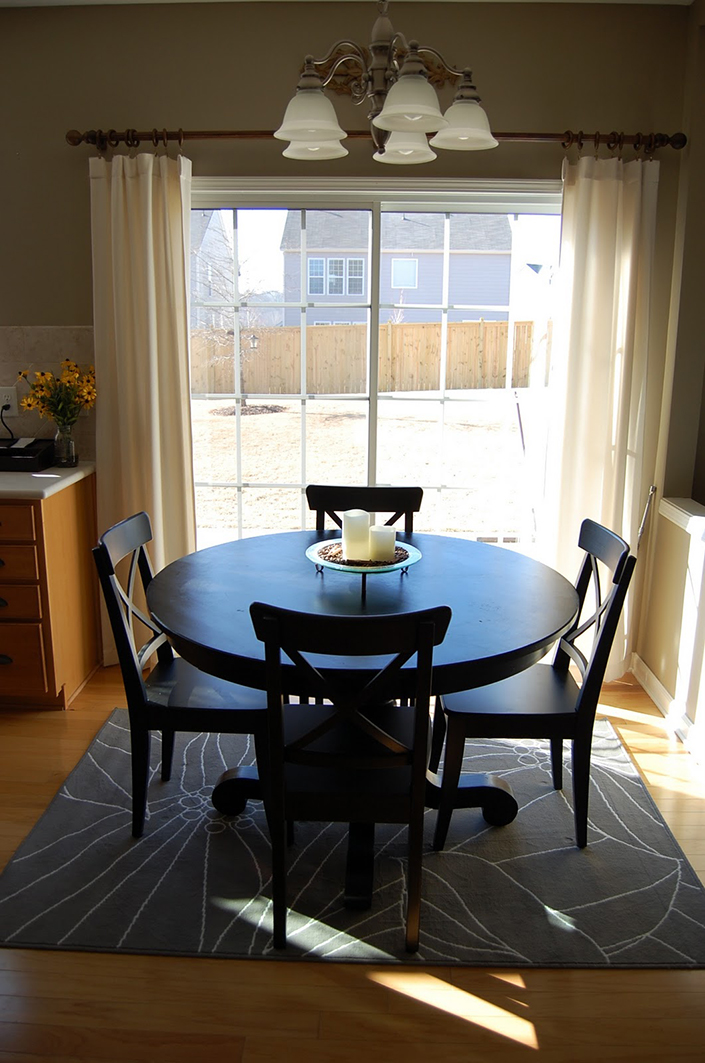







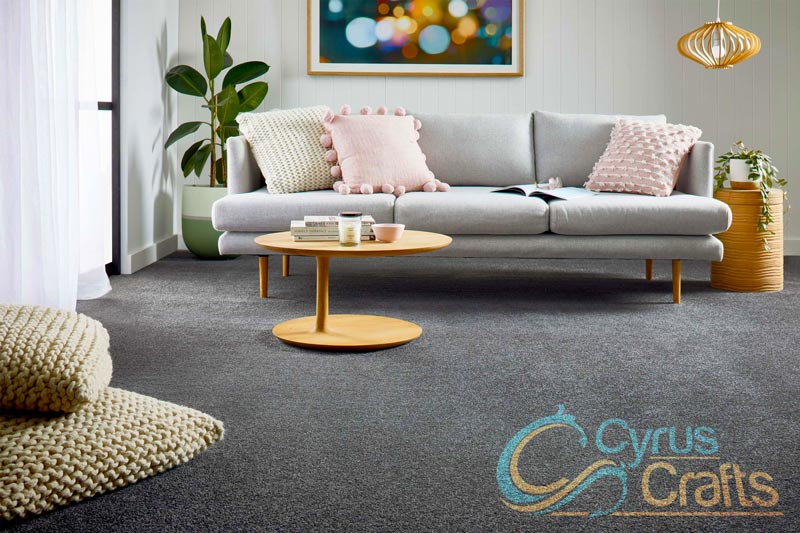

/choose-dining-room-rug-1391112-hero-4206622634654a6287cc0aff928c1fa1.jpg)

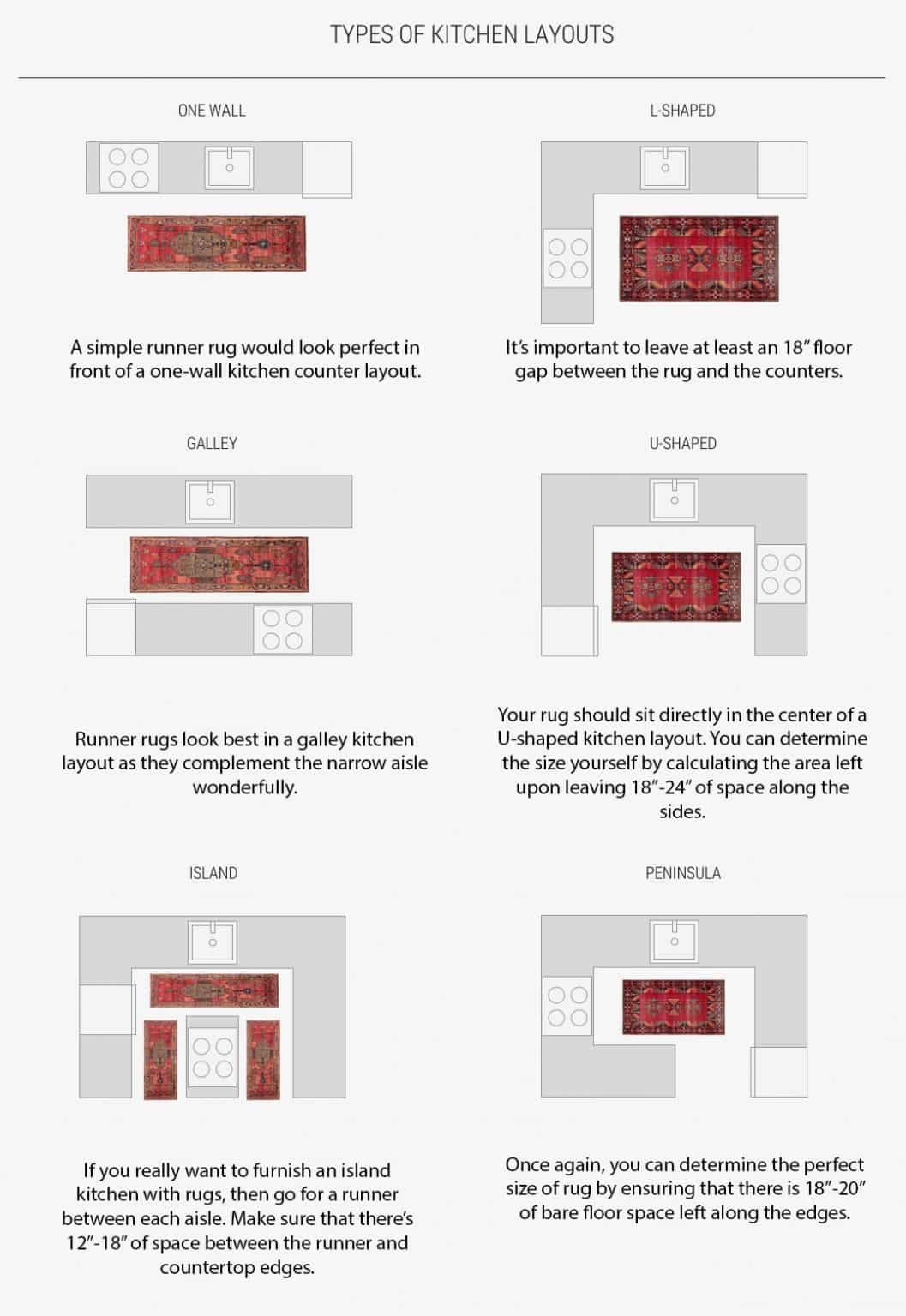




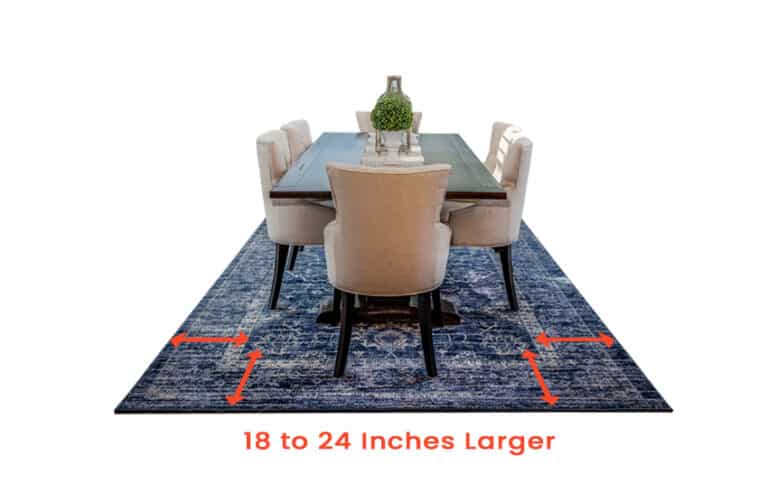




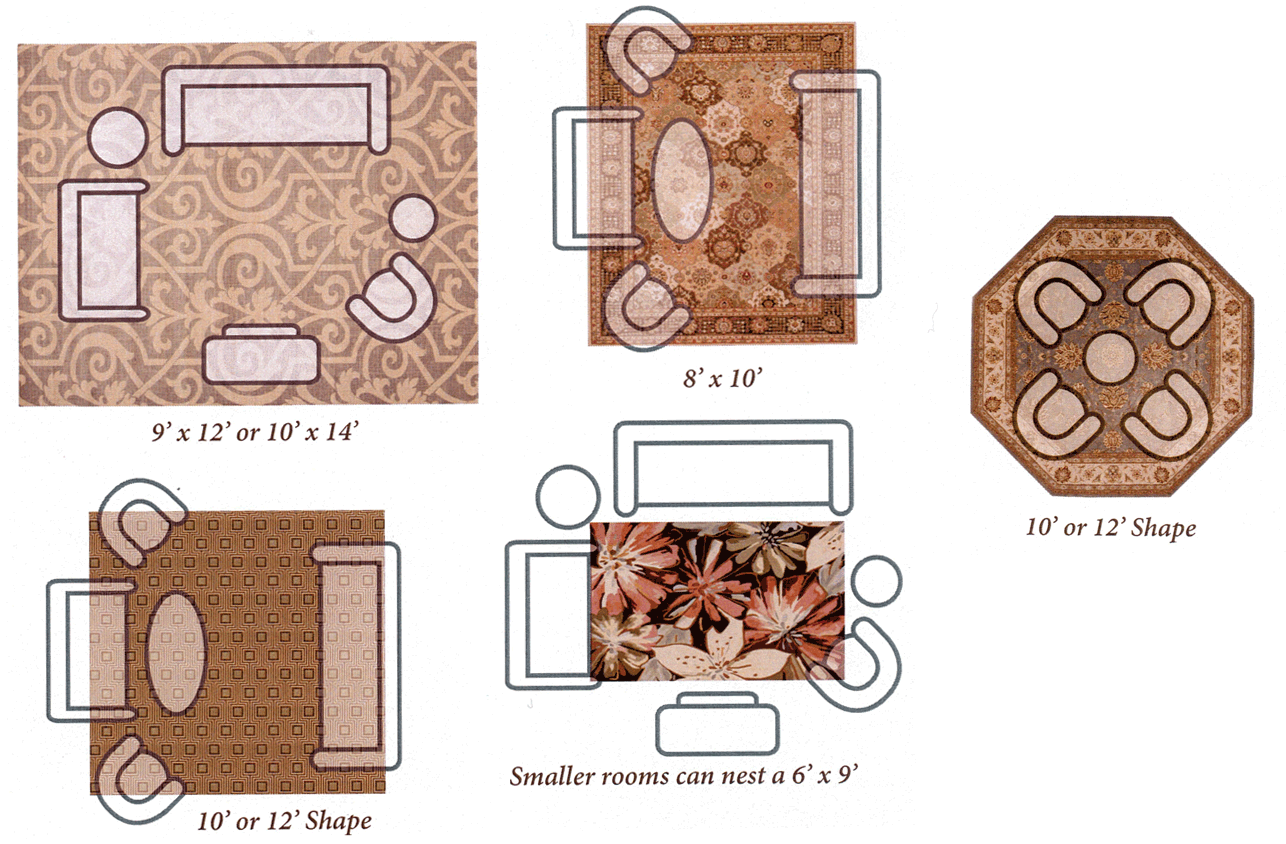

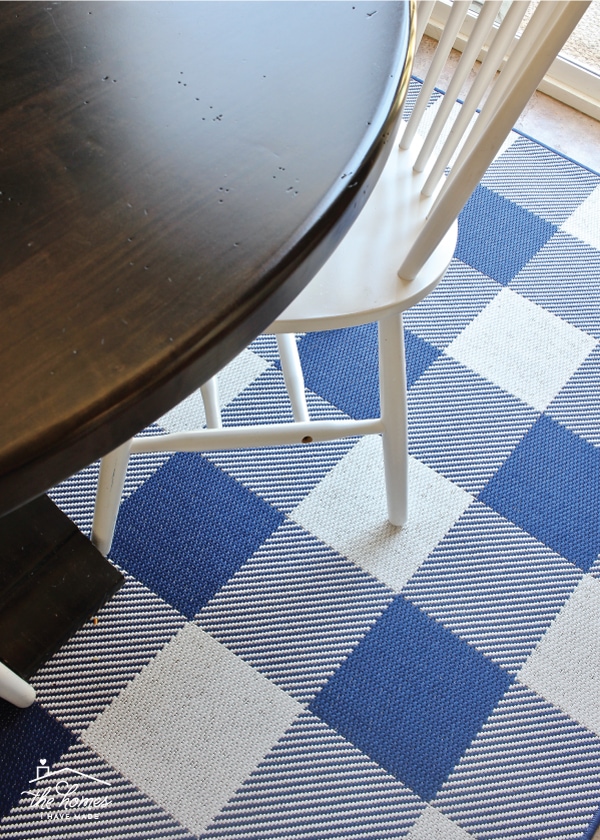


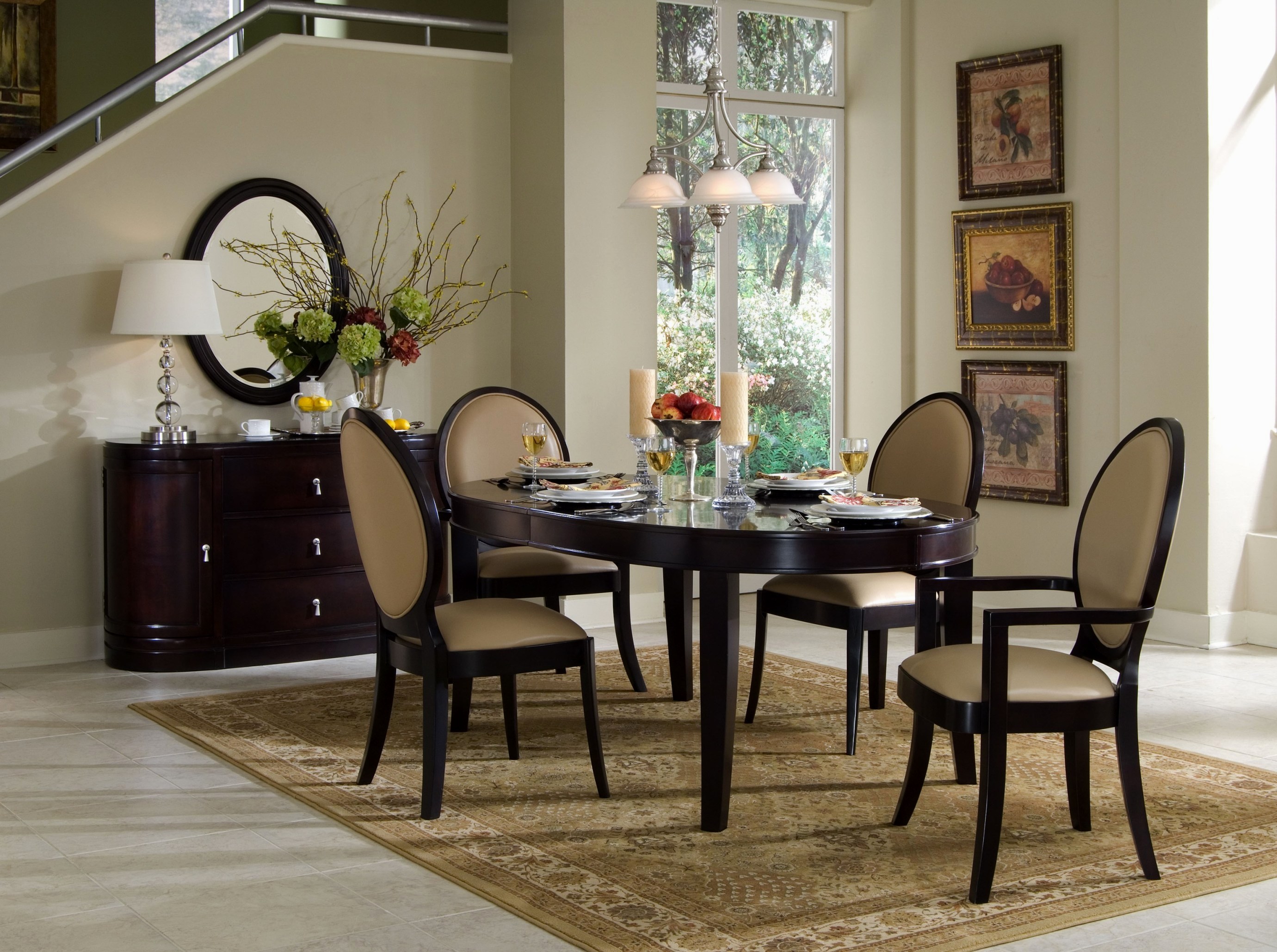
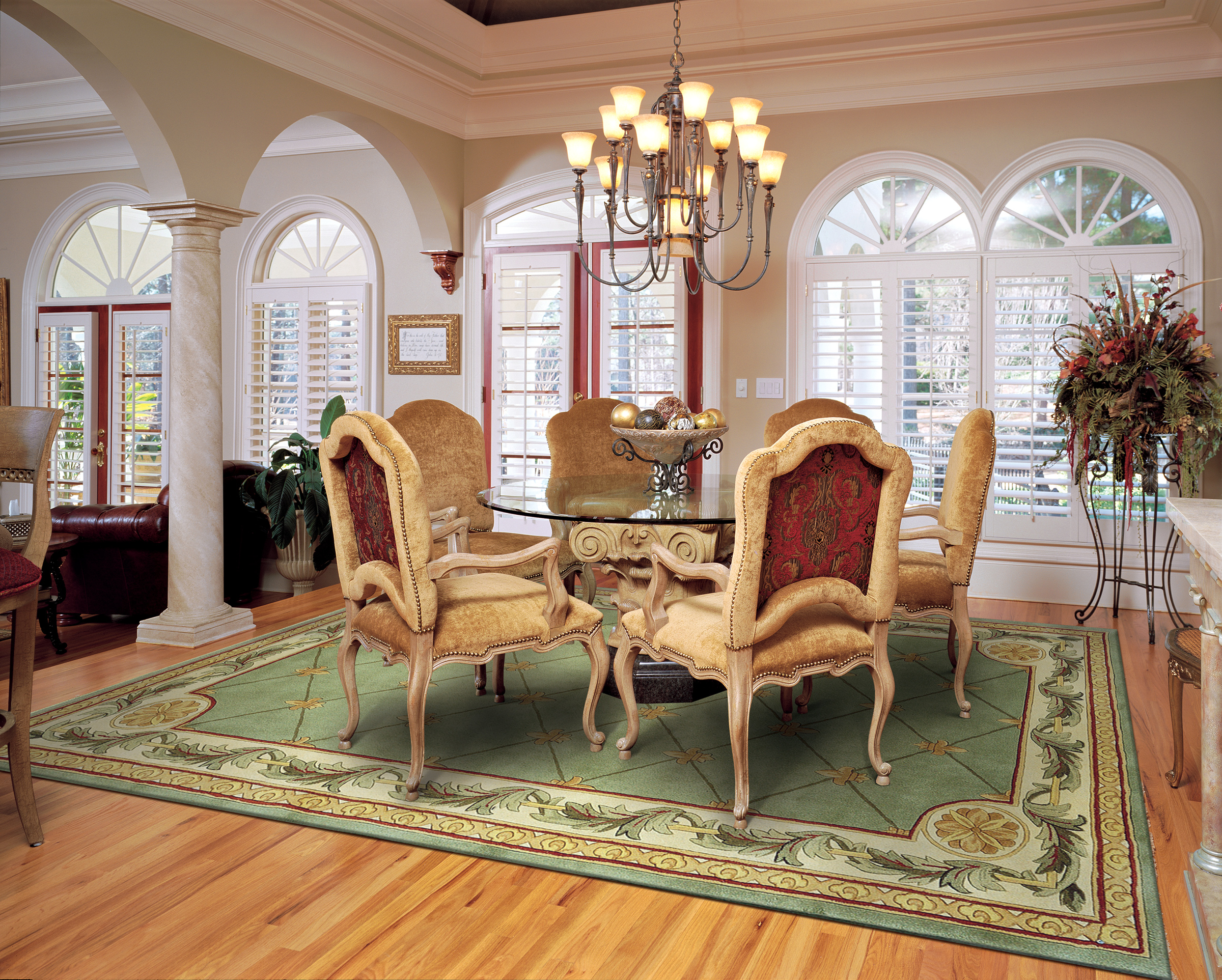
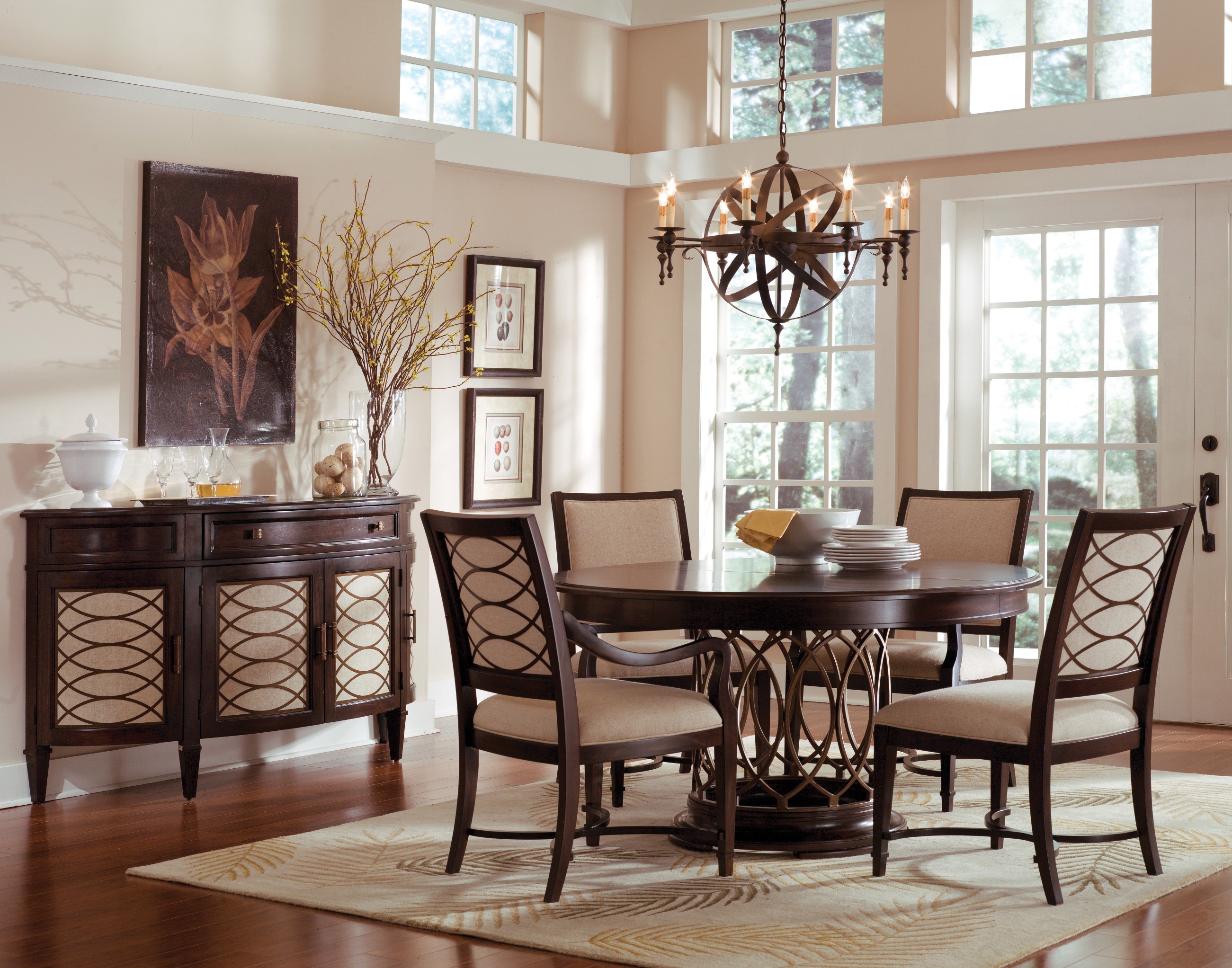
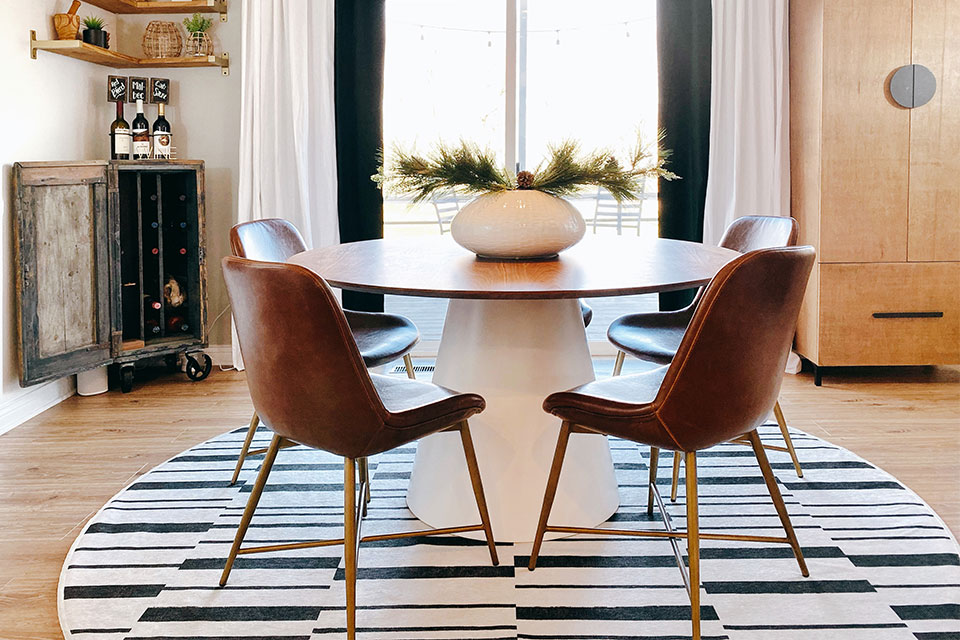



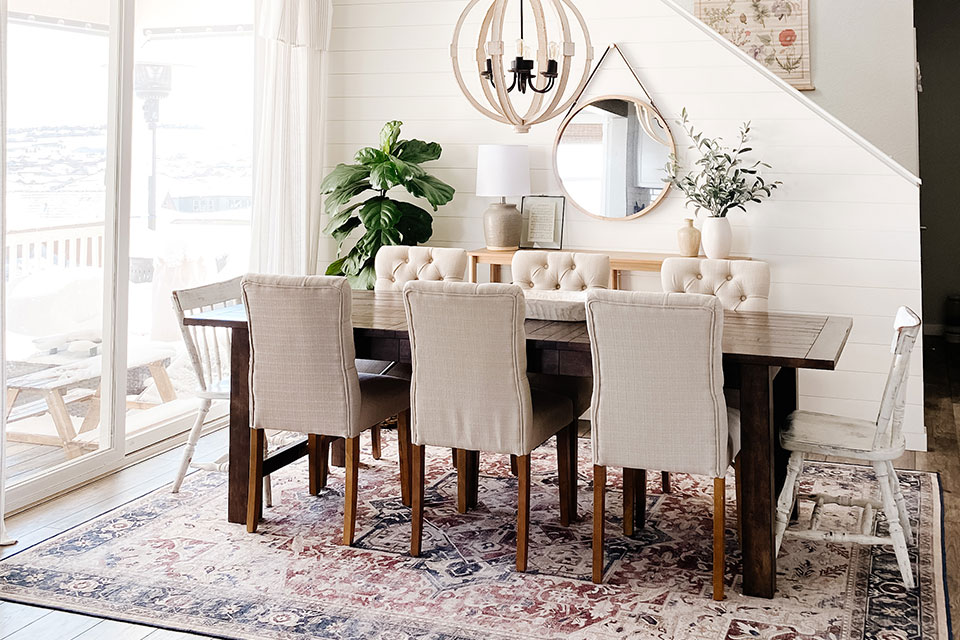
/choose-dining-room-rug-1391112-hero-4206622634654a6287cc0aff928c1fa1.jpg)
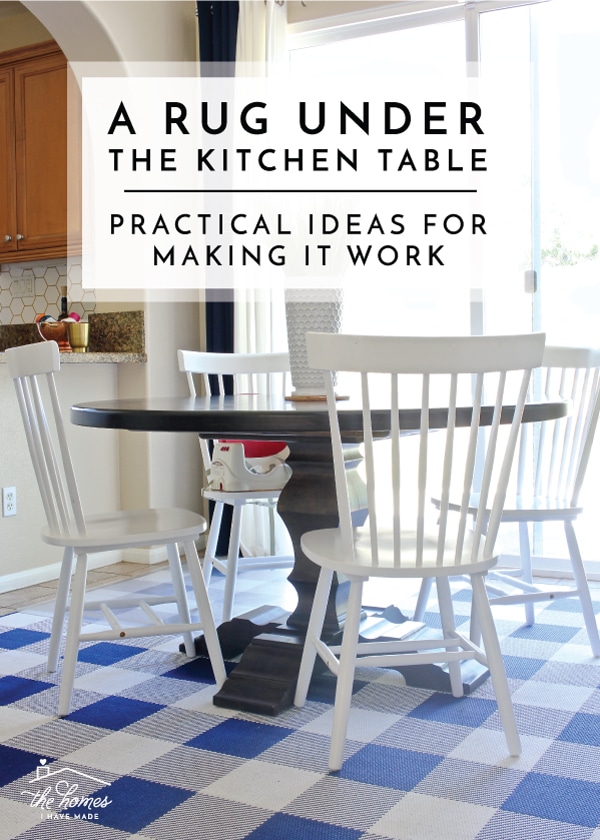



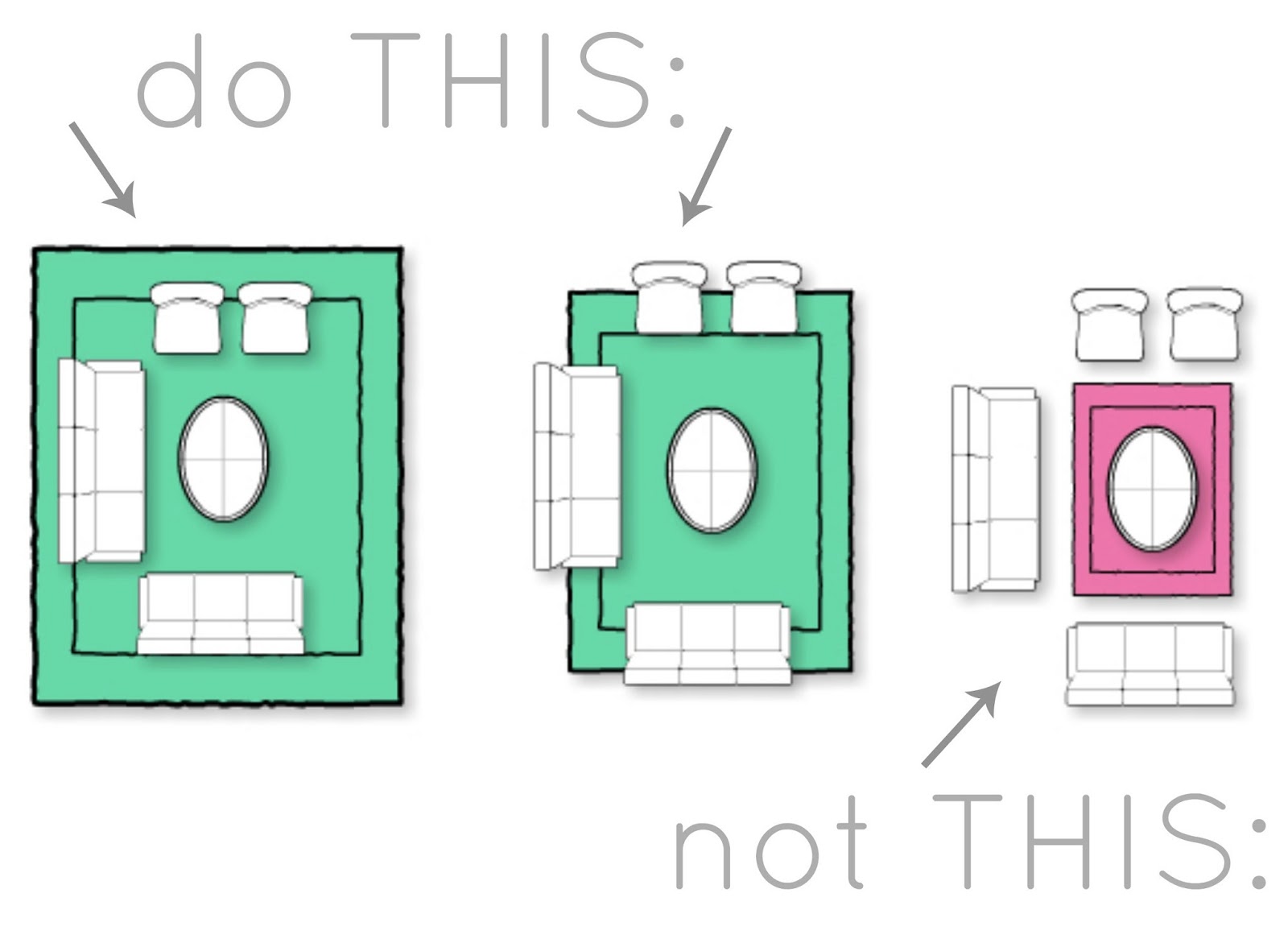
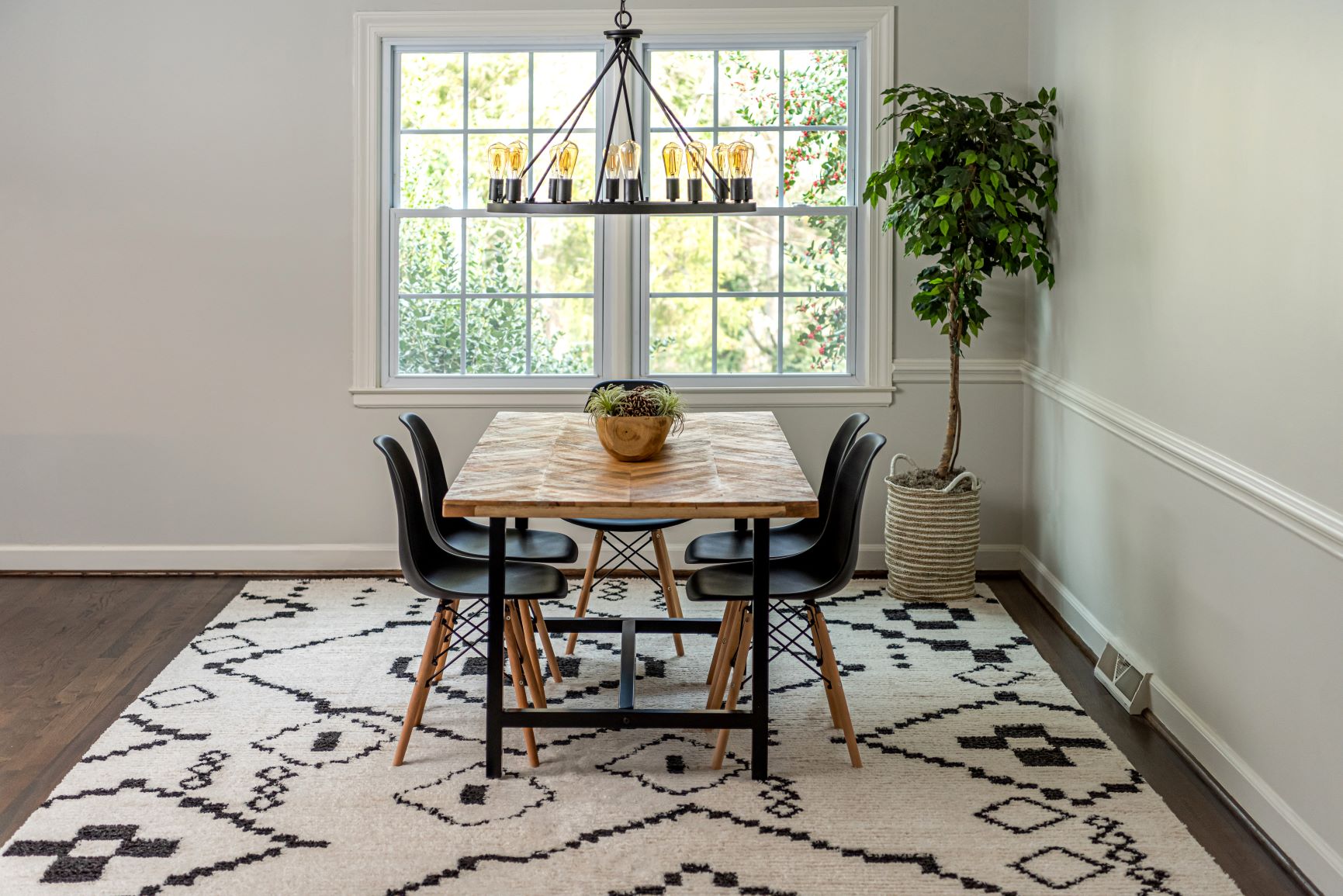
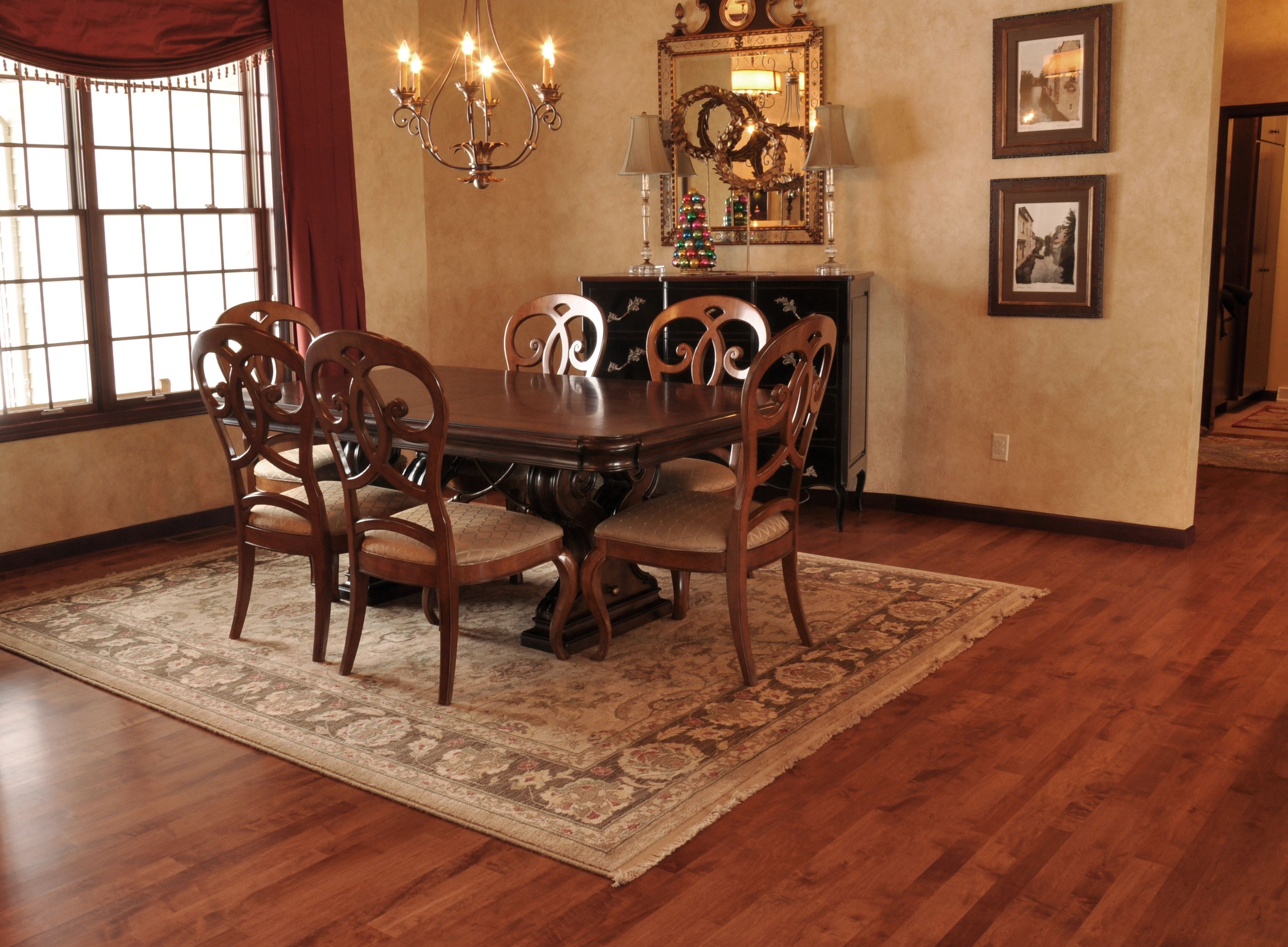
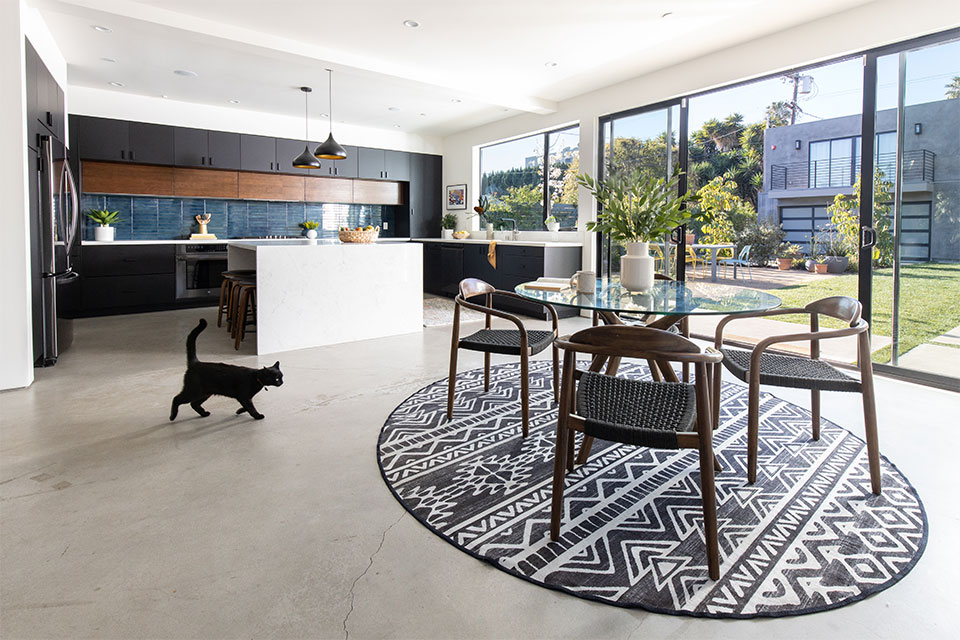
/Retouched-Laura-Genevieve-horizontal-af3b84469eb848d99572faeda9950803.jpg)







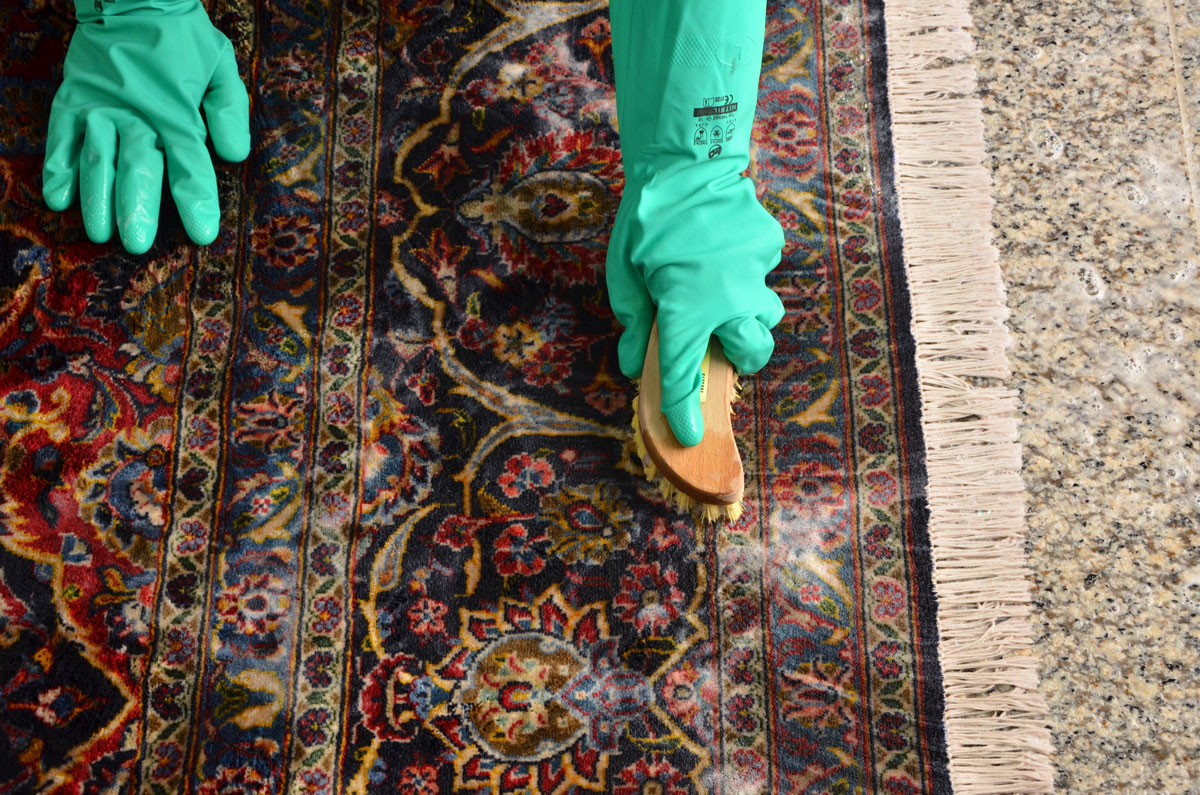

:max_bytes(150000):strip_icc()/cleaning-sisal-rugs-5085836-08-f69e237e904f44a0865aa2d698ce820e.jpg)



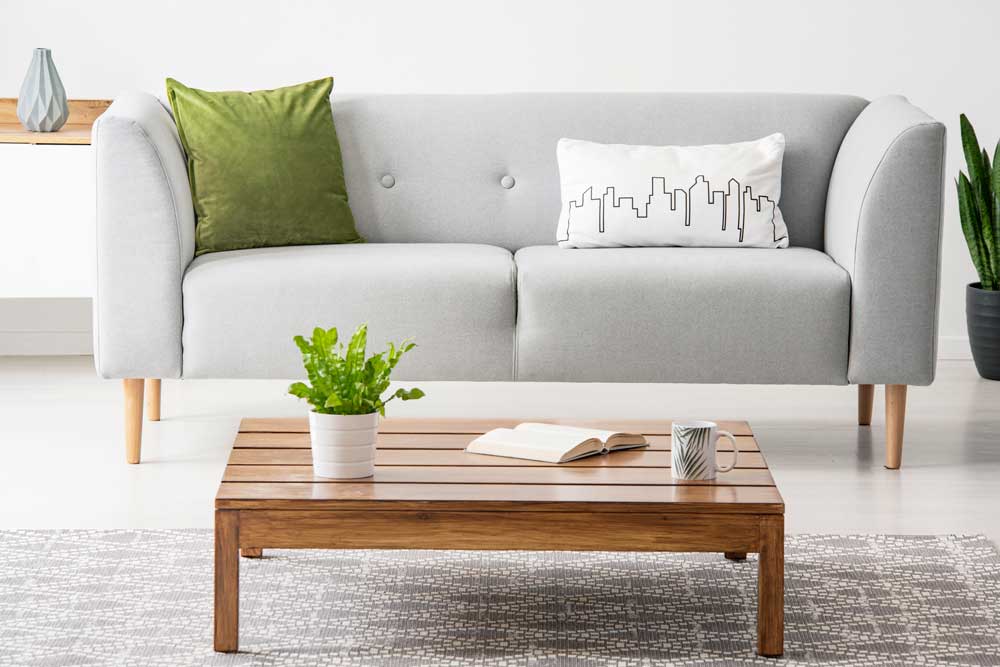
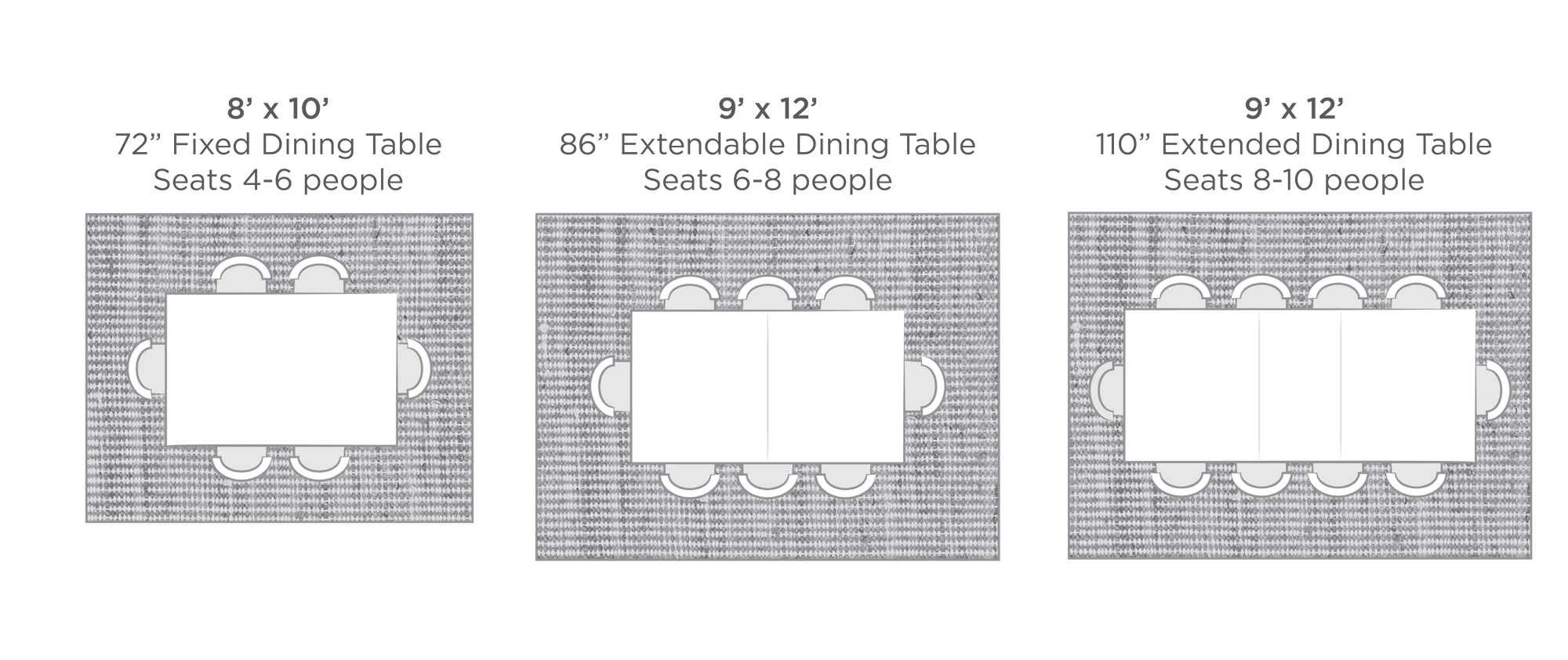
/right-size-area-rug-for-bedroom-350698-8615a8f66ae846159199c384040de351.png)


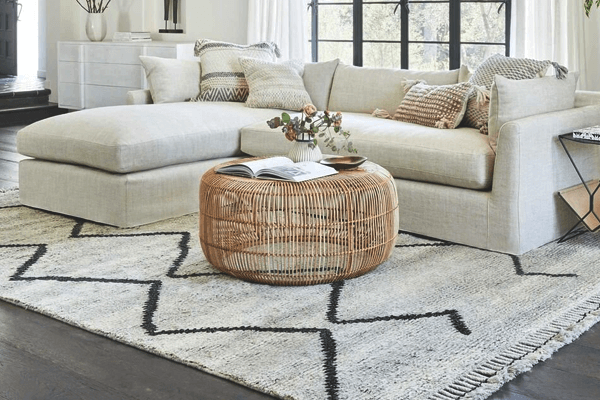



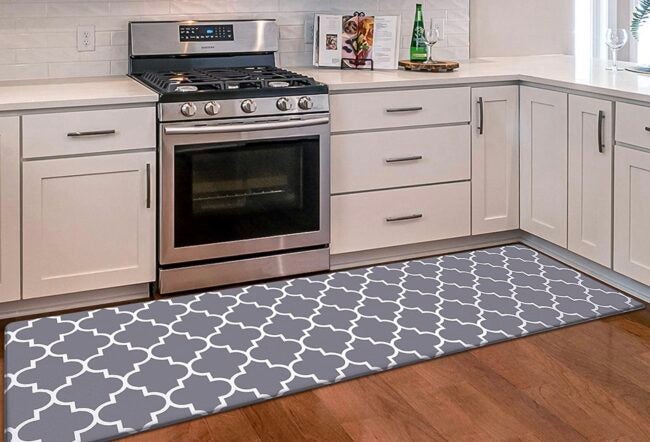

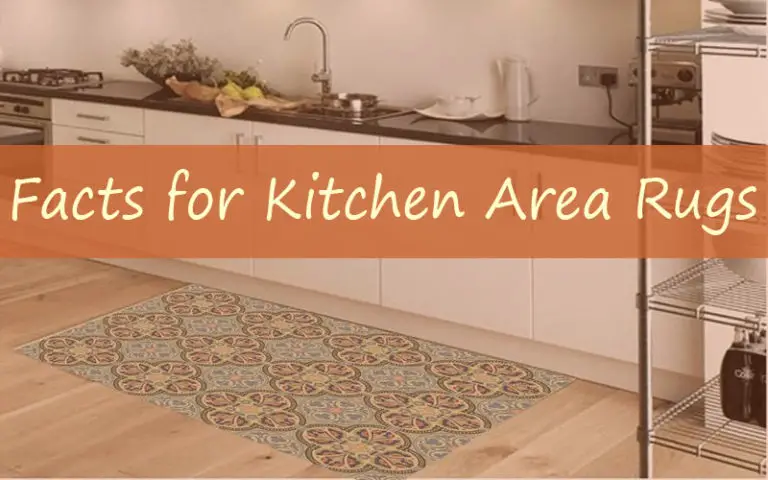













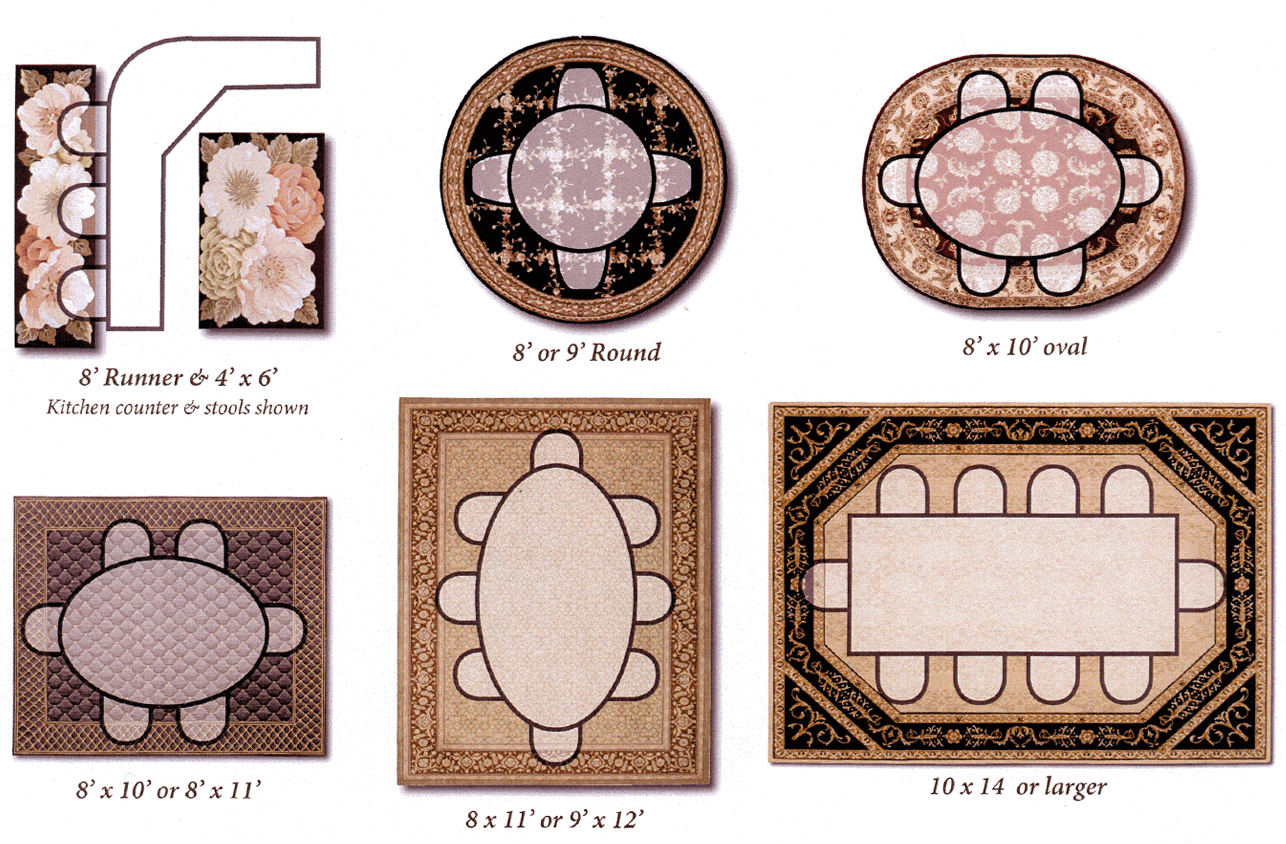




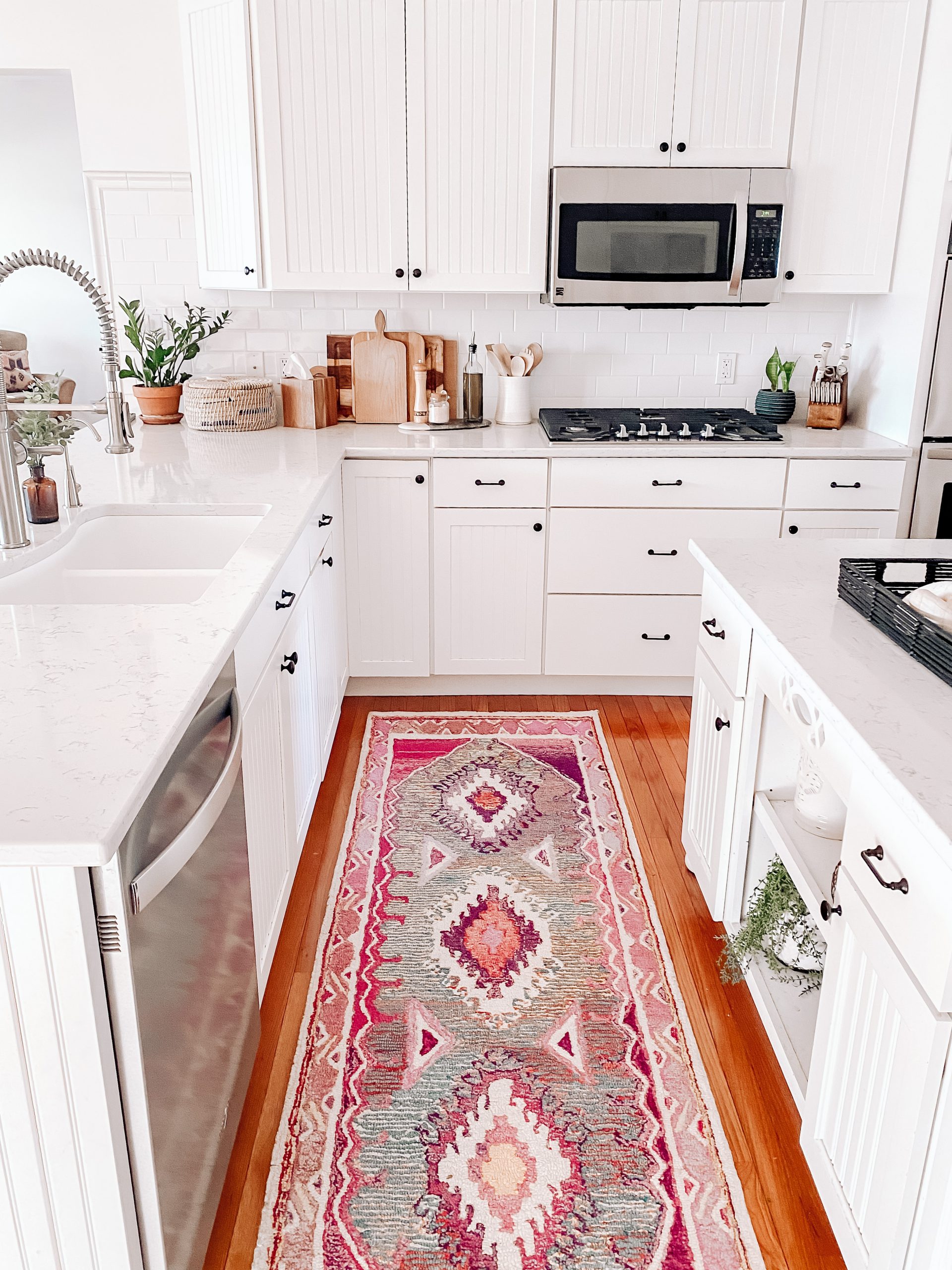
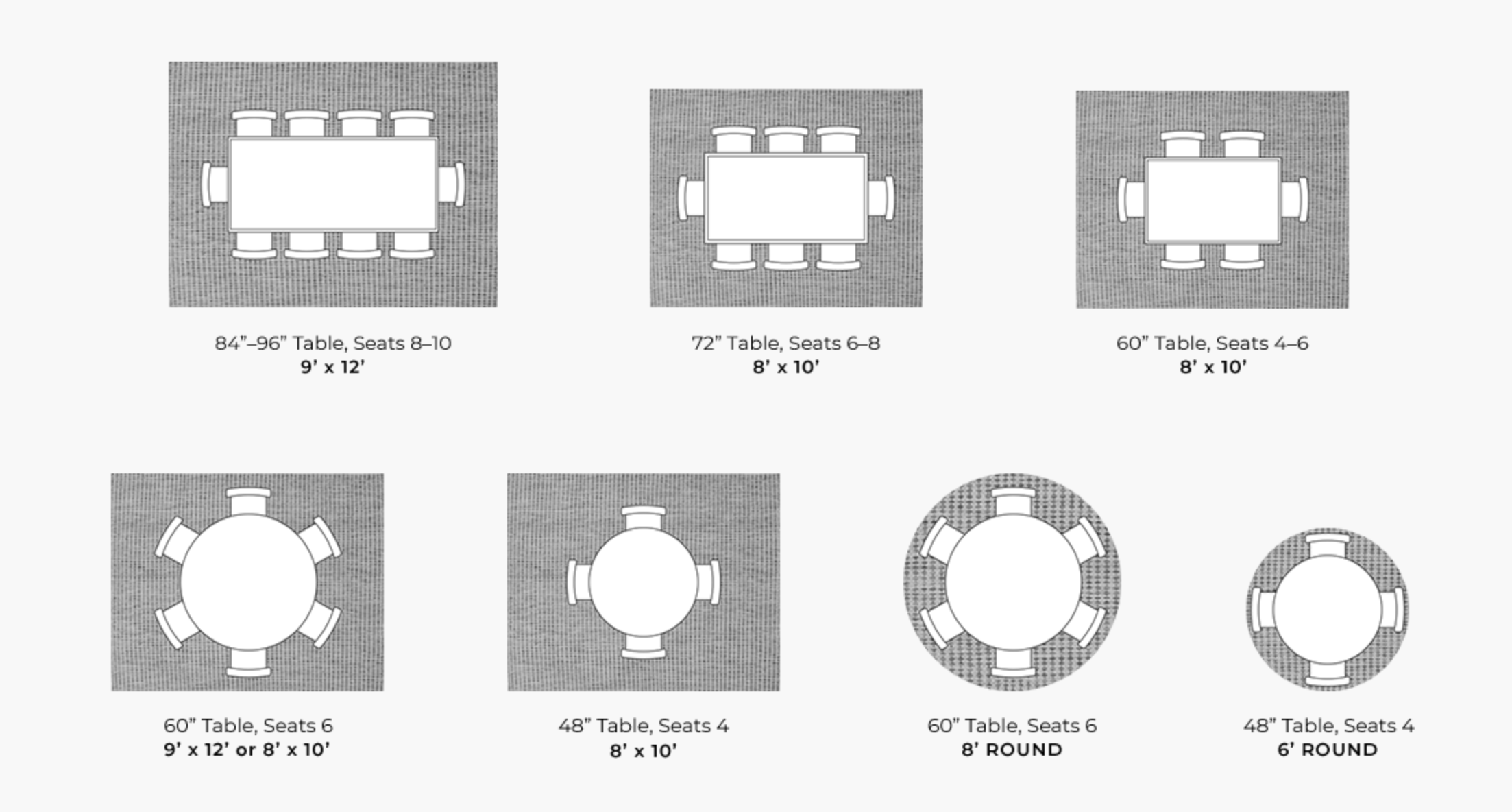


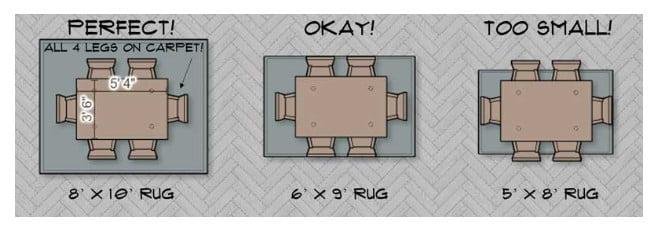



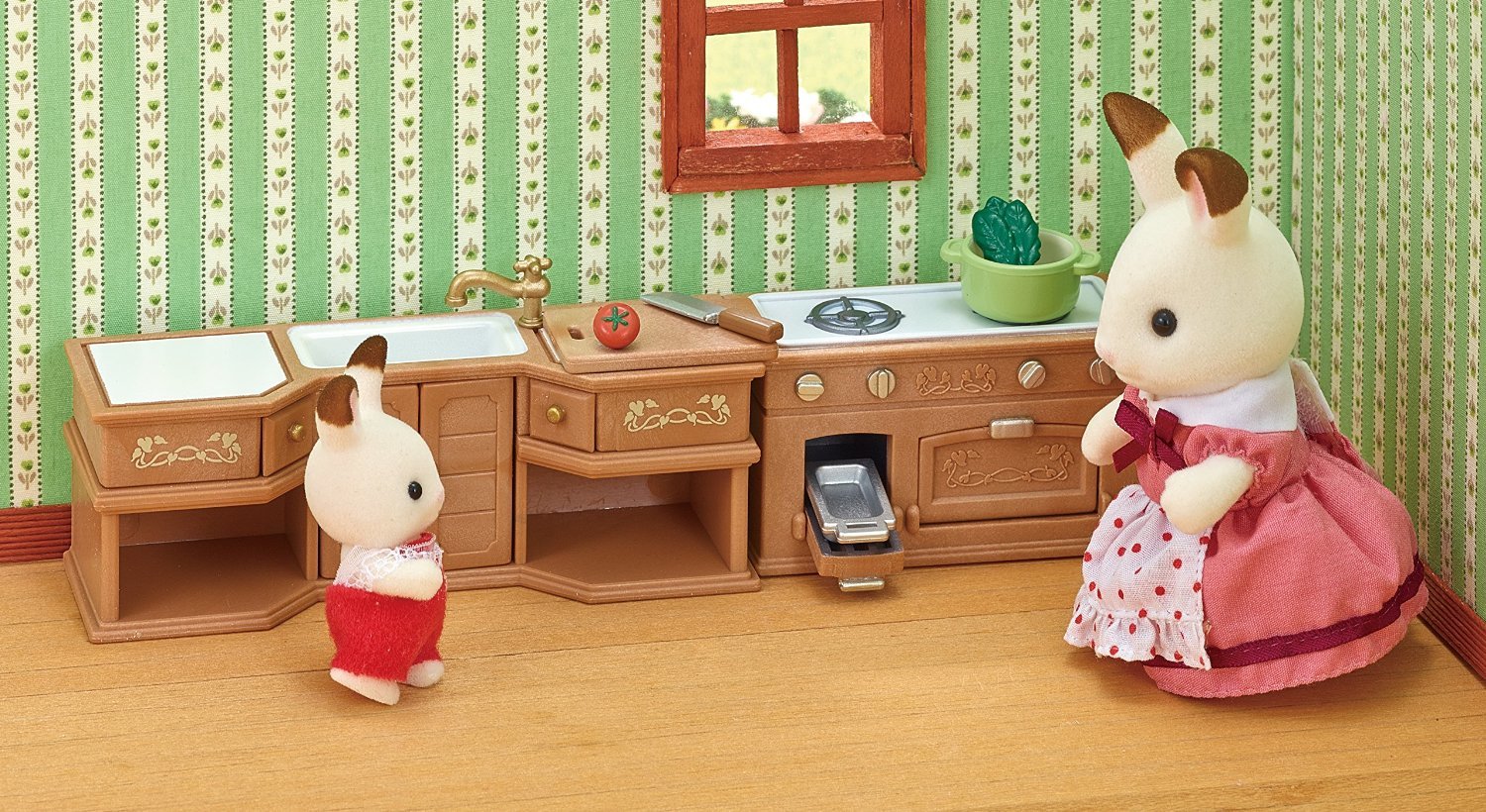
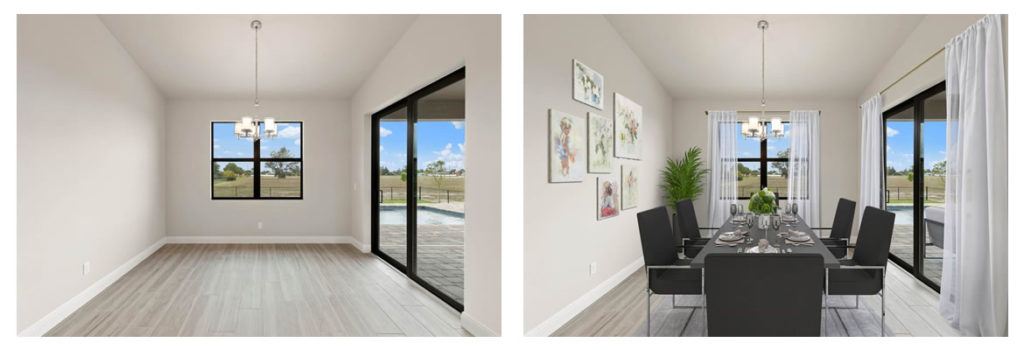
/living-room-gallery-shelves-l-shaped-couch-ELeyNpyyqpZ8hosOG3EG1X-b5a39646574544e8a75f2961332cd89a.jpg)

